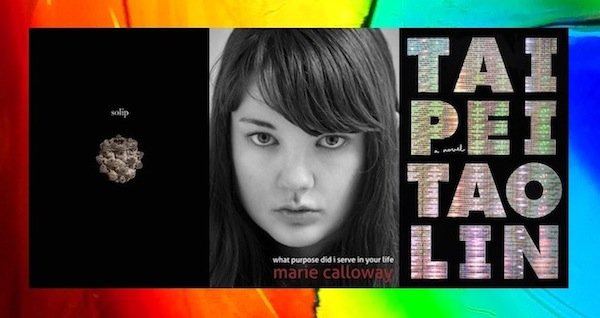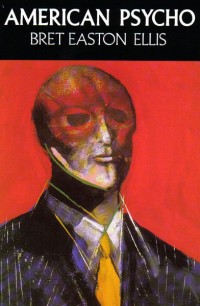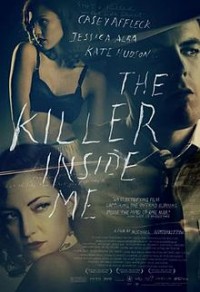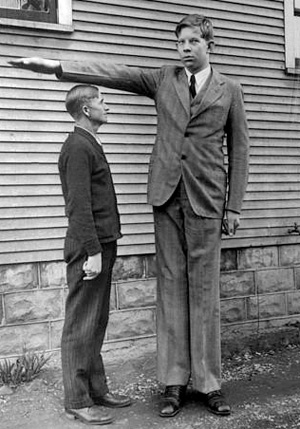Comment on This Post: Giant Triple Threat Giveaway (Ken Baumann, Marie Calloway, Tao Lin)
I know there was a Tao Lin post x hours ago, but I don’t care. I have books to give away. Want to win free books? Want to grumble? Comment on this post to get one of these:

FIRST PRIZE goes to the commenter with the best* comment
SECOND PRIZE goes to the commenter with the worst* comment
THIRD PRIZE goes to the commenter who makes the MOST* comments (bonus for over 100)
each prize will be selected randomly from the (pictured) prize pool of:
Solip by Ken Baumann
what purpose did i serve in your life by Marie Calloway
Taipei by Tao Lin
*as calculated by me
(for the curious, the reason I have these books is that I pre-ordered two out of the three, then received ARCs. i bought two copies of Ken’s because I knew it would be badass)
25 Points: Taipei
 Taipei
Taipei
by Tao Lin
Vintage, 2013
256 pages / $14.95 buy from Amazon
1. “Paul dreamed something about his cube-shaped room being a storage facility in which he’d been placed by an entity that believed in his resale value.”
2. “He felt like he was trying to remove the surface of a glass bottle by pawing at it with oven mitts.”
3. “‘Nice,’ said Paul staring transfixed at Fran’s delicate and extreme gaze, like that of a skeleton with eyeballs, or a person with their face peeled off.”
4. “Daniel arrived with his friend Fran, 22, whose intriguing gaze, Paul noticed with interest, seemed both disbelieving and transfixed in discernment, as if meticulously studying what she knew she was hallucinating.”
5. “He awoke at night fifteen hours later and, while showering, felt like he lived in a module attached to a spaceship far enough from any star to never experience daylight.”
6. “The book party, like algae, feeling its way elsewhere, moved slowly but persistently from the bookstore’s basement to its first floor, to the sidewalk outside, converging finally with other groups at a corner bar…”
7. “There were times when his memory, like an external hard drive that had been taken from him and hidden inside an unwieldy series of cardboard boxes, or placed at the end of a long and dark and messy corridor…”
8. “Daniel was standing with limbs and neck uncoordinatedly extended, slightly striding in place–the pre-predatory stance of a chained thing that had broken free and didn’t yet know where to direct its vengeance, or what to do generally.”
9. “…watched the police car, or a police car, zoom past in the left lane, with emergency lights on and sirens off, quick and soundless as an apparition or the hologram of itself.”
10. “One the plane, after a cup of black coffee, Paul thought of Taipei as a fifth season, or ‘otherworld,’ outside, or in equal contrast with, his increasingly familiar and self-consciously repetitive life in America, where it seemed like the seasons, connecting in right angles, for some misguided reason, had formed a square, sarcastically framing nothing–or been melded, Paul vaguely imagined, about an hour later, facedown on his arms on his dining tray, into a door-knocker, which a child, after twenty to thirty knocks, no longer expecting an answer, has continued using, in a kind of daze, distracted by the pointlessness of his activity, looking absently elsewhere, unaware when he will abruptly, idly stop.” READ MORE >
June 6th, 2013 / 12:01 pm
25 Points: American Psycho
 American Psycho
American Psycho
by Bret Easton Ellis
Vintage Books, 1991
416 pages / $15.95 Buy from Powell’s or Amazon
1. A few weeks ago, I took a break from holing up inside my apartment and writing my thesis to walk to Powell’s Books here in Chicago. I mostly just wanted to get outside for a minute, but I ended up walking around the bookstore for an hour. I first grabbed Bret Easton Ellis’s American Psycho and a John Cheever story collection, then decided I didn’t want the Cheever but accidentally put the Ellis back instead. In retrospect, this seems like an unheeded signal from the Book Gods of the universe not to read American Psycho.
2. Bret Easton Ellis has been on my mind twice recently: (1) his Twitter rant about David Foster Wallace where he called the writer “the most tedious, overrated, tortured, pretentious writer of my generation” and “a fraud” (2) his tweet about Tao Lin’s upcoming novel Taipei: “With ‘Taipei’ Tao Lin becomes the most interesting prose stylist of his generation, which doesn’t mean that ‘Taipei’ isn’t a boring novel…”
(I guess what I really had on my mind, then, was Bret Easton Ellis’s Twitter account). So I connected “master prose stylist” and Bret Easton Ellis in my head. After reading the book, I stand by that statement.
3. The place where I felt creepiest while reading American Psycho was eating alone at a diner. It had eerie resonances with the scene in Sandman: Preludes and Nocturnes where John Dee enters a diner and whips all the customers into a crazed frenzy, causing them all to kill one another within 24 hours. Like American Psycho, there’s flesh mutilation and cannibalism in this Sandman scene. Luckily, the worst damage to me that night was my friend blowing me off (hence, the eating alone).
4. My cover has these almost delicate ribbons of what is presumably blood, but it’s light red, shading off into pink at parts, and doesn’t blood darken when it dries? It could just as well be wisps of smoke…red smoke…and this could just as well be a novel about drugs, which play no small part in the book.
5. A Time Out blurb on the back proclaims that American Psycho “examines the mindless preoccupations of the nineties preppy generation.” It was first published in 1991, though, so I guess that makes the book a harbinger of the decade that was to follow. Another blurb calls American Psycho a “satire in which the hedonistic, coke-fueled consumerism of the Eighties was taken to its brutal conclusion.” Q: is this a novel of its time, tied closely to the period in which it was written and set? Will we be reading American Psycho differently, or at all, in 50 years?
6. There’s plenty here to date the story, mostly technology-wise—videotapes, compact disc players, no cell phones—but what keeps signifying “90s” to me is the pervasiveness of cocaine. There’s a lot of coke here, people using it, people trying to get it. At one point, main character Patrick Bateman’s credit card snaps in half from being constantly used to do the drug.
7. Basic plot: American Psycho is about a closet psychopath, the moneyed Wall Street banker Patrick Bateman, following him around Manhattan as he violently tortures and murders various individuals. Many of his victims are women, some men; lots are existing acquaintances of his, some are unknown parties—homeless people, delivery boys, and prostitutes—and some are animals. Bateman displays a particular (and racialized) cruelty towards beggars, hitting them with the familiar “get a job” lines and dangling dollar bills in their grasp then snatching them away. For Chrissakes, one of his victims is a 5-year old child at the zoo.
8. American Psycho was turned into a movie in 2000, directed by Mary Harron and starring Christian Bale, Chloe Sevigny, Reese Witherspoon, Jared Leto, and Willem Defoe. I have not seen the movie. Of the friends I’ve told that I’m reading this book, most have seen the movie and about half have read the book. I keep getting it confused in my head with the movie American Beauty (1999), which also portrays murder, but only a single one.
9. I think I’ve twice had to tell people that this is my first Bret Easton Ellis book, which makes me feel like a poorly-read cretin.
10. Bateman meticulously reports on the dress of most every male and female character and stranger he encounters, along with his own attire at every turn. Like, there are just a lot of brand names, proper nouns, in this book. Sample line: “Price is wearing a six-button wool and silk suit by Ermenegildo Zegna, a cotton shirt with French cuffs by Ike Behar, a Ralph Lauren silk tie and leather wing tips by Fratelli Rossetti.” Ad nauseum, every other page. There are also numerous discussions among the characters over the niceties of dressing well: the proper color socks and belt to wear with a gray suit, what kind of tie knot to wear with a rounded collar, the rules for sporting pocket squares, and so on and so forth. At one point, referring to a fellow diner, Bateman asks Evelyn “Hasn’t it occurred to him that his suit might inspire loathing?” READ MORE >
April 25th, 2013 / 1:30 pm
25 Points: The Killer Inside Me
 The Killer Inside Me
The Killer Inside Me
by Jim Thompson
Vintage, 1991
256 pages / $14.95 buy from Powell’s
1. Lou Ford is a small town sheriff who kills people in extremely gruesome ways (though the language chosen to describe it is subdued).
2. He strikes everyone in town as a moron, and somehow when he starts killing this makes it all the more irksome.
3. Stanley Kubrick called it “probably the most chilling and believable first-person story of a criminally warped mind I have ever encountered.” And he was correct.
4. The novel’s author, Jim Thompson, was known as Dimestore Dostoyevsky, which is also correct.
5. Lou Ford takes a lot of baths and reading this in a hot bathtub is very difficult.
6. Jim Thompson is one of the most intriguing figures to ever write a story about a killer and—unlike most—he does it best in the first person.
7. The ending will probably make you wish you were still in the thick of the narrative, which is either a sign of the novel’s excellence or an observation that ending something this strange and unconventional is not-fucking-easy.
8. Lou Ford takes to bashing around a hooker named Joyce Lakeland, who likes it a great deal and encourages him to keep coming back.
9. Casey Affleck stars in a film rendition of this book that recently came out and although it’s pretty spot on I think you’ll find when reading that some things just cannot translate.
10. Though the convention of the cops being on the killer’s tail plays a part in this book you’re hardly on the edge of your seat wondering about the morality being discussed here; this is, more than anything, a work of art by an artist before it is a poorly-crafted slice of genre fiction. READ MORE >
October 16th, 2012 / 9:09 am
Tao Lin’s Big Kid Book Deal
I hope this is the last time I’ll find myself writing about Tao Lin. In July I wrote a lengthy story for The Morning News that delved into Lin’s publishing venture, Muumuu House, and looked at a few of the prominent (allowing for a loose definition of “prominent”) writers in his literary cadre. (The post engendered quite a comment chain on this very site.) Mere weeks later, Lin landed a $50,000 book deal with Vintage for his next novel. And that was when someone commented on the Morning News piece that they’d be “interested in an update on all of this” (presumably they meant an update from me) and wondered whether his deal would “change things.”
It does change things, yes. The fact that his next novel (it’s tentatively called Taipei, Taiwan) will come out under the Vintage label means that, like it or not, it’s going to get a lot more notice than his books have had in the past when published by Melville House. And that’s no knock on Melville House, which does a fabulous job both with publicity (the Moby Lives blog is fun and occasionally gets good pickup on Twitter etc.) and with the aesthetic look of its titles (see: the Art of the Novella series). But it’s still a tiny press. A book published by Vintage will be seen, not just by critics that have managed to avoid Lin and maybe still haven’t even heard of him, but also by mainstream readers, the Barnes & Noble shoppers who have definitely not heard of him and who read the Stieg Larsson trilogy. This isn’t to say they’ll pick up the novel and buy it, but it may catch their eye, they’ll take a look, and now they’ll know who or what a Tao Lin is.
Tao Lin’s next novel, reportedly titled Taipei, Taiwan, has been sold to Vintage. More info at the Observer, “I honestly feel, to a large degree, like me and everyone else are close to death and that the awareness of this has, to me, precluded thoughts of “making it” (this is a theme of the novel).”

